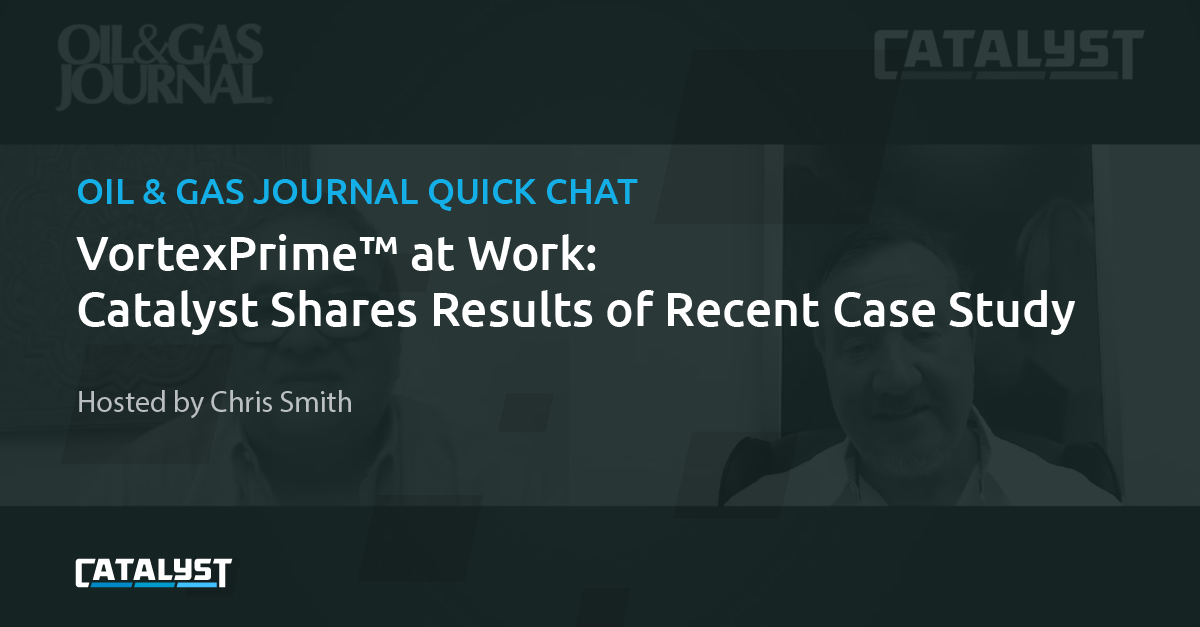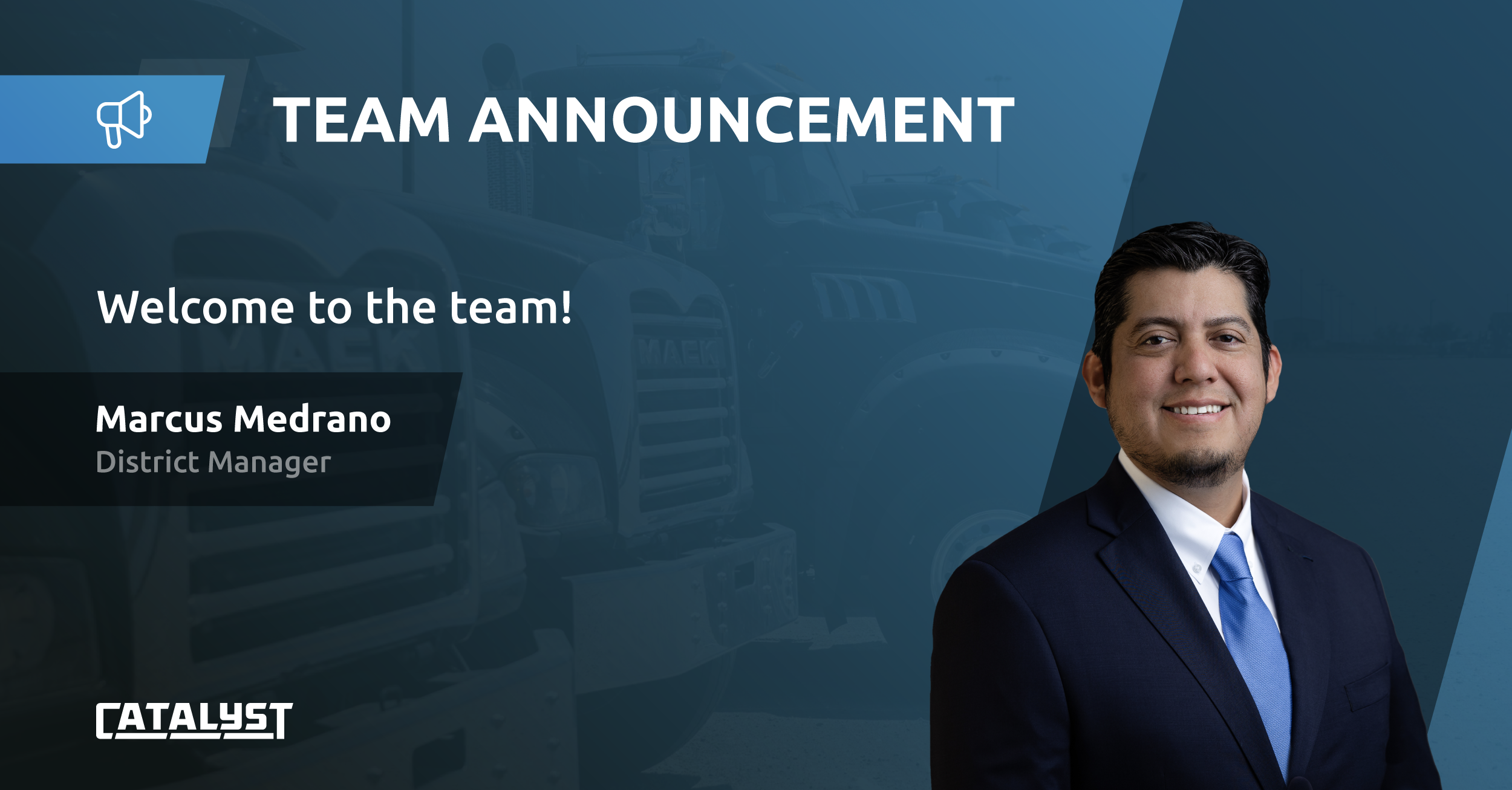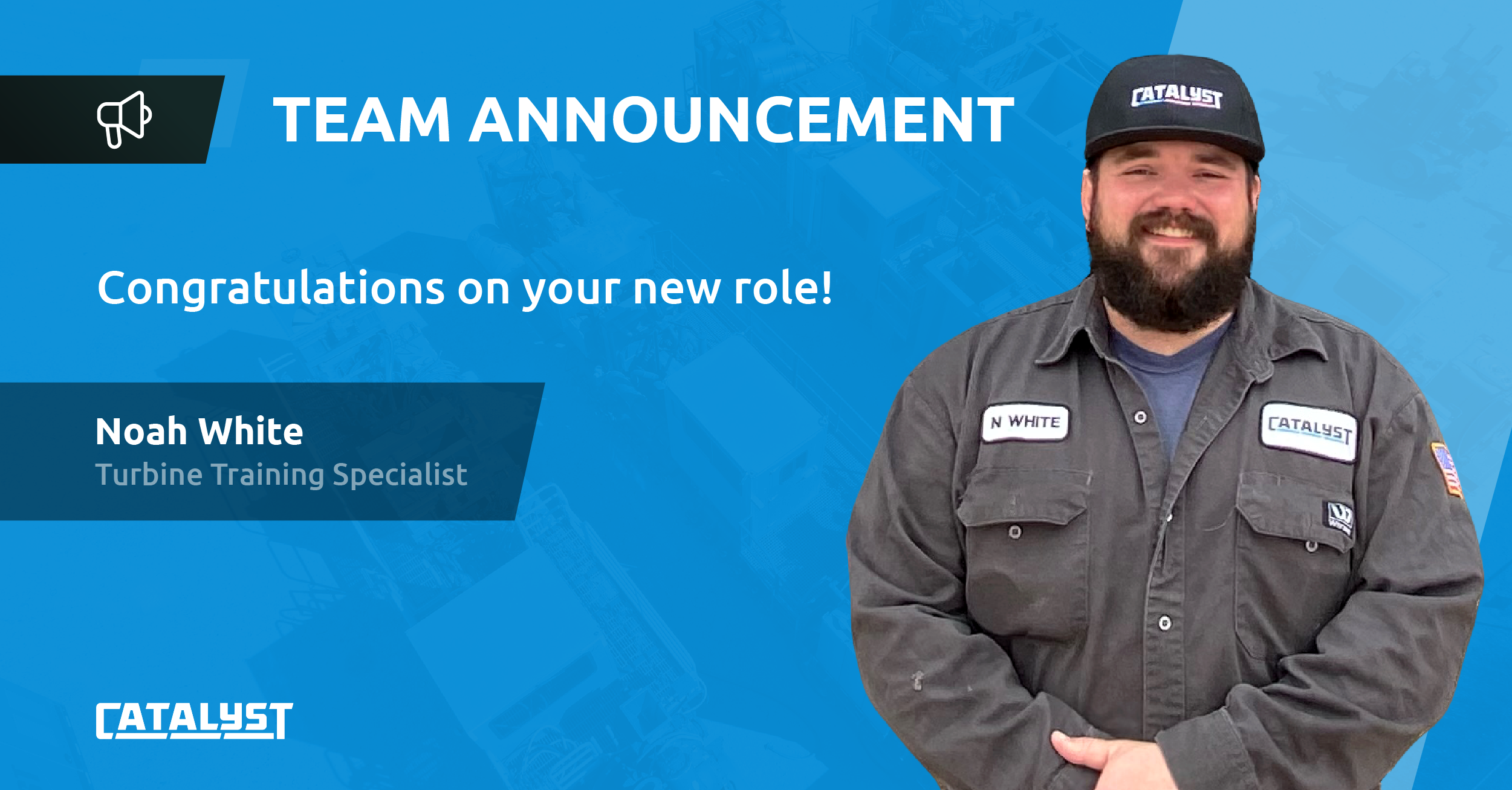Catalyst Energy Services COO, Seth Moore, joins Oil & Gas Journal Editor in Chief, Chris Smith, to discuss the results and insights of the company’s innovative technology at work. In a recent case study, VortexPrime operated side-by-side traditional hydraulic fracturing technology, proving its smaller footprint meets its performance claims. Seth and Chris also address current industry challenges through the lens of the energy transition and technology.
Watch the video here:

Relevant links:
Seth Moore
https://www.linkedin.com/in/seth-r-moore-1b02908/
Chris Smith
https://www.linkedin.com/in/chris-smith-8737759/
Transcription:
Chris Smith, Oil & Gas Journal, Editor in Chief:
Welcome to this Oil and Gas Journal Quick Chat. Today, we’ll be talking with Catalyst Energy Services. I’m Chris Smith, editor in chief at Oil and Gas Journal, and with us is Seth Moore, Catalyst Co-founder, executive vice President, and Chief Operating Officer. Seth, welcome and thanks for joining us. Can you tell us a bit about your background to start things off?
Seth Moore, Catalyst Energy Services, COO, Executive Vice President, Co-founder:
Thank you, Chris. It’s great to be here. Yes. I’ve been in the industry now for, I’ll say decades, 35 plus years. So, I’ve spent time in a lot of different basins of the world and got the pleasure of meeting and working with a lot of great people. [I] come from a pressure pumping background. So, hydraulic fracturing is something kind of near and dear to me. I’ve had the opportunity to work with some colleagues, that I’ve worked with in the past to start Catalyst, and it’s been a great run so far. We’re based here in Midland, Texas.
Chris:
You guys rolled out Vortex Prime in early 2022, and you’ve recently completed a case study regarding that deployment. Tell us a little something about that.
Seth:
Yeah, Chris, we were approached by an operator that had property. They had a pad that they needed to frac and complete. And the challenge with the pad is the size of it was on a smaller size of pads. But what really made this a unique challenge was the wells where they were oriented within that pad, on that pad, and it was going to make, using conventional technology a real challenge. So much so that they were looking at altering their completion design, pumping at a lesser rate. It was gonna change their wire line, their perforating, it’s gonna have a lot of effects, uh, if they changed their completion design. And with the high horsepower density of Vortex Prime, it’s a lot of horsepower and a small package.
Seth:
We were able to place enough horsepower on that pad site to complete the work at the original design without having to alter anything really. So, that was really how this project came to start. And we finished the project and had I think 92% pumping efficiency throughout the project for frac guys out there. They’ll understand. That was a good run. You know, we shoot for over 90 and we beat that. So, the customer was happy; we were happy. And the technology was perfectly suited for that application.
Chris:
There’ve been other turbine powered frac technologies introduced in the past. What makes VortexPrime different?
Seth:
I think the big thing that makes it different is there’s been some evolution of technology. Chris, you know, that’s happened across the whole spectrum of this tech, of this unit. But one is making sure we have a high horsepower powertrain. And turbine technology has advanced. What we chose was a really high, It’s a 5,000 horsepower power plant. It allows us to go from 20 units down to eight units. So we are really shrinking the size of the fleet. So to kind of put that in perspective, it takes less workers, it’s less trips through sensitive areas, it takes less pad size, so that’s a big thing. We also took and designed it on a body load chassis. We wanted it to be a hundred percent self-sufficient. And by doing that, putting it on a body load, it shrunk it from 74 feet kind of in a tractor trailer scenario down to 48 feet.
Seth:
So, there’s a big savings of size, but being self-contained, people are amazed when they see it. There’s nothing else that’s required to do that, to make this technology work. The controls in the past, Chris, had been a real issue. You know, people before us, service companies had a tough time trying to control the turbines. And we just started from scratch and said, let’s build a control that will allow for the precision that, our operators expect for their, well, that we expect from a safety perspective that will allow us to take this horsepower and deliver it in a very controlled and precise way. And that’s what we did. And it’s worked, it’s worked marvelously. As I said, 5,000 horsepower. So, you put that in perspective, our traditional units are about 2,500 horsepower. You don’t quite get 2,500 horsepower out of ’em.
Seth:
We’re talking something that’s, that’s two times bigger. So, you have to have a drive train and a pump that can withstand that. And that technology has evolved, and we’ve partnered with a couple of great companies that have helped make sure we can have a pump that works and we have a drive line that works. That’s taken time, but it’s well worth the effort because you have to have that reliability in order to deliver the results that the customer wants and that we expect of ourselves. The other one of the things, and it kind of challenged a lot of people, were air filtration turbines. They love clean air. And obviously on a frac site, it’s not a dust-free environment.
Seth:
So, people had used filtration in the past that if you think about it as resistance, it starves the engine a little bit for air, which means the engines don’t operate. The turbines don’t operate as efficiently as they can, which means you lose some efficiency. You burn more fuel per barrel pumped. We came up with a filtration system that we’ve patented that has almost no resistance to it, but it filters the air very well. I mean, it’s amazing. And that’s allowed us to retain more of that horsepower. The beauty of this is there’s no filters that have to be replaced, so you don’t end up with a lot of waste going into the waste stream. And that’s just on air filters themselves. So, this technology really, if I think about it compared to the past, other than the fact that there’s a turbine and a pump, pretty much everything about it is different from start to finish. We’re proud of that. We’re proud of what we’ve created. I’m proud of what this team has created because I know it’s really unique.
Chris:
It’s fewer units in the field as well, right?
Seth:
This technology, we believe that less is more. We believe simplicity is better. You know, we hit the bullseye on what we set out to do. Our CEO says it checks all the boxes. And, I love that statement because that’s a simple way of saying it, but it does do just that.
Chris:
Technology at this point is certainly still the biggest part of the equation. But given the current business environment, I’m sure CO2 emissions reductions are also both important for the work you’re doing but would be of interest to the audience out there. Could you elaborate on what this would mean at scale? VortexPrime in this regard?
Seth:
Emissions reduction is gaining a lot of momentum across a broader kind of customer base. And, you know, if we go back to 2022 and before we heard about it from some of the major operators, but now it’s gaining a lot of traction across a broader base. And this technology with its 100% natural gas is a fuel has been amazing for that. I mean on this past project we were saving almost 40 metric tons of CO2 a day. So, if you run those numbers, I mean, it’s big. 17 days, we were six over 650 metric tons of CO2 reduced. So, I think it’s gonna continue to grow. I think you can’t ignore it. It’s too big to be ignored. I’m not sure where it’ll go, but we’re happy that we have technology that really addresses that as well as it does.
Chris:
The, uh, the case study also mentioned 41% of fuel cost savings versus diesel. How is VortexPrime different from other frac technology claiming ESG benefits?
Seth:
This particular case study that we’re talking about, the customer, they wanted to gain a little bit of confidence in VortexPrime. They were a smaller operator. This technology was amazing to them, but they wanted us to have some diesel out there. So, at the beginning of this 17-day project, we pumped some with diesel and VortexPrime together. We call it a hybrid fleet, and it allowed them to gain confidence and see the true benefits of this technology. Midpoint, we were almost all VortexPrime, and by the end of the pad we were pumping nothing but VortexPrime. So that 41% savings really was over. Even considering that in the beginning, in the first half of the pad, we had some diesel units that we were running in conjunction. If you really look out and you say—the right project, the right partner access to field gas at a reasonable rate, we could be talking $18 million a year in fuel savings—million and a half dollars a month—big numbers.
Seth:
I don’t know of anything out there that can do that or deliver that. There’s some technologies that claim great ESG benefits and, and I don’t doubt that, but when you really look at this, it leaves a very small footprint behind when you talk about the hundreds and hundreds and hundreds of gallons of liquids that have to be recycled and transported and poundage of dry waste that has to be disposed of versus this technology. And we put the numbers together, they were almost unbelievable. We had to check ’em a couple of times just because the 99% reduction on some of the waste stream [and] in the mid-nineties overall. So those are kind of secondary and maybe tertiary benefits of it, you know, less people on the road bringing fluids to location and from location during these fluid change outs. There’s all kinds of benefits that impact ESG that some people don’t think of. They think of just the fuel savings, just the emissions, but we realize and our customers are starting to realize that these are real benefits indeed. So, we’re proud of that and what that means for our company and our customers, but also what it means for our industry.
Chris:
Yeah, it all adds up, that’s for sure.
Seth:
Yep.
Chris:
Back to the business environment in which all this is happening with the short-term direction of the oil and gas market looking pretty uncertain at this point. And, at the same time, despite that more mid-level operators, it seems like every week are becoming actively engaged in the energy transition. What can companies do to minimize volatility, and how does VortexPrime play into that?
Seth:
Chris, I’ve been at this a long time. It’d be great to be able to fix the volatility of the market. This would probably be a whole different conversation if I could do that. But what Catalyst can do, and specifically what VortexPrime can do is offer an option that has, I’ll say extreme fuel savings and those fuel savings are real. They’re documented. Then when you start throwing in some of the other benefits that we talked about, like maybe some carbon credits on the reduction of CO2, that number gets even more compelling. This fleet is eight units. We can move it, and with a little bit of planning, we can move and set up and be ready to go in 12 hours. And with that, you gain some extra pump days throughout the year. And those extra pump days equate to greater efficiency. And that greater efficiency equates to even more savings and underlying economics. So, there’s a multitude of other things that when you shrink the amount of equipment that it takes to do work, you reduce that complexity. Because we have a really simple system; when you reduce that complexity, you gain efficiency. And with that, it drives a lot of other economics. So that’s what we can do to help operators navigate these volatile times to the degree that we can help them.
Chris:
Catalyst is headquartered in Odessa, Texas. Where is VortexPrime manufactured?
Seth:
Chris, VortexPrime is manufactured in Odessa, Texas. We made the decision to build it in-house. We wanted to be able to keep control of our technology as we were going through the patent process. And we wanted to be able to manufacture quality. I can’t speak enough about the operation team, the maintenance team, and the manufacturing team that we have here and our engineering staff, and those groups work well together. It really shows in the quality of the technology, the reliability of our units. And it allows us to build that quality in a great way. The other things that in 2020 everyone experienced—we had supply chain disruptions.
Seth:
And by us controlling that process from start to finish, and we’ve been able to partner with people and really prop our supply chain up where it’s reliable, it’s predictable, we’ve got line of sight out over the next couple of years, and it allows us for growth. We’re in growth mode now, and we’re building units now. So, it allows for that. Maybe you can do that when you have someone else build equipment for you, but we know that it works better when the team’s all together. For an example, the group came up and they said, ‘we want to create this certified operator program.’ And those groups, it was kind of a coffee pot talk. They were sitting around like, how do we wanna roll this out; we wanna make sure it works well in the field.
Seth:
And so, they created this very, I call it elaborate training program. It’s a badge of honor when these guys and gals [are] able to have that patch that they’re certified, VortexPrime operator. And, manufacturing’s in on that training, maintenance is in on that training, engineering’s on it, as well as operation. And that allows for a much better product in the end. And certainly you can develop the best technology, but you’ve gotta go to the field and you’ve gotta deliver there and make it work. And that’s, that’s where, uh, having everybody in one facility, driven to the same goal really adds value. Sometimes being in Odessa, can present a few challenges. We’re way out west, but this team here makes up for any of that, any of those challenges, plus some, so we’re proud to make it manufactured right here in Odessa.
Chris:
Right there where the action is.
Seth:
That’s right.
Chris:
That’s a wrap for today. For more information, visit CatalystEnergyServices.com and thanks again for joining us, Seth, and thanks everyone else for tuning in.
Seth:
Thanks, Chris.
About Catalyst Energy Services
Catalyst Energy Services started with the idea that technology is the key to the future. We take the stewardship of preserving our world’s resources seriously and are dedicated to constantly innovating our sector of the energy industry to achieve cleaner, safer, and optimized production. Built by an accomplished executive team with over 100 years of hands-on experience in the field, engineering, and business management, we are an emerging stimulation service company specializing in hydraulic fracturing treatment.



